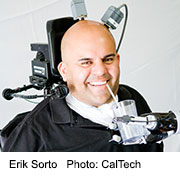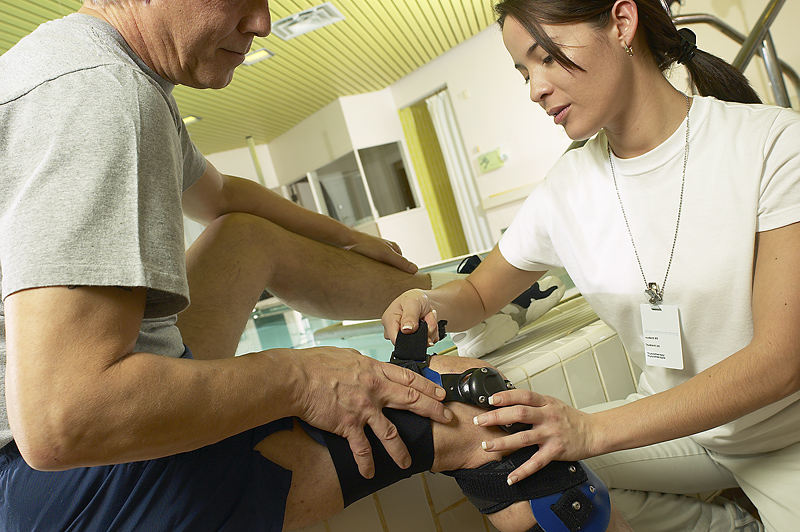
THURSDAY, May 21, 2015 (HealthDay News) — A gunshot wound to the spine left Erik Sorto paralyzed from the neck down. Yet today he is able to do some of life’s most simple, but vital, actions — such as taking a drink from a cup — by using a robotic arm that he controls with his mind.
It sounds like science fiction, but researchers have steadily been making progress in developing mind-controlled robotic limbs. The hope is to one day give people with paralysis or amputations more independence.
However, experts caution that this research is still in its early stages.
Still, Sorto’s case, reported in the May 22 issue of Science, represents an important advance, according to experts. He has two tiny chips implanted in an area of the brain called the posterior parietal cortex (PPC), which controls the intention to move.
That’s in contrast to the handful of other paralyzed individuals who’ve been given similar implants. But in those cases, the chips have been placed in the brain’s motor cortex, which is involved in the direct execution of movement.
It’s a key distinction, explained senior researcher Richard Andersen, a professor of neuroscience at the California Institute of Technology, in Pasadena.
Signals sent from the brain’s motor cortex are involved in the details of movement — like “lift the arm” and “extend the arm.” Signals from the PPC are “higher level,” and related to overall goals, such as “I want to pick up that cup.”
So devices implanted in the PPC could make it easier for people to control a robotic arm with their thoughts, and make those movements more fluid and natural, Andersen said.
And for Sorto, it worked. After recovering from surgery to have the chips implanted in his brain, he underwent training to see if he could learn to move the robotic arm using only his thoughts.
The big surprise, according to Andersen, was that Sorto was able to control the arm on day one.
“It was very intuitive for him,” Andersen said. “Needless to say, we were pleased that it worked.”
He said two additional patients have since had chips implanted in the PPC, and Sorto has had his for three years now. In addition, a few patients at other research centers have had similar devices implanted.
But much more work remains before people with paralysis or amputations will be able to use the technology in their everyday lives, Andersen stressed.
For now, the robotic arms are confined to the lab setting. After surgery, patients are left with terminals protruding from the skull that are used to connect the implanted chips to a computer system that decodes the signals being sent from the brain — such as, “I want to pick up that cup.” That message sparks the robotic arm to move.
For the approach to work in real life, the technology will have to go wireless, said Andrew Pruszynski, the author of an editorial published with the study, and an assistant professor at Western University, in London, Ontario, Canada.
“We’ll need to be able to imbed everything in the patient, like we do with cochlear implants and pacemakers,” said Pruszynski.
“And since this requires brain surgery,” he added, “you’d want to be sure that the chips last.”
Pruszynski said this advance follows years of research in primates, and it’s a “great demonstration” that signals from the PPC in humans can be decoded and used to move a robotic limb.
But that does not mean that targeting the PPC is the best or only approach. Ultimately, Pruszynski said, people may benefit from having chips implanted in both the PPC and the motor cortex, to get more detailed control over movement.
Andersen said the goal is, in fact, to give patients that fine movement control, for everyday tasks such as tooth-brushing and shaving — the very routines Sorto has said he misses.
To help get there, the researchers are working on technology that will relay signals from the robotic arm back into the part of the brain that gives us the perception of touch.
Pruszynski agreed that’s a key step. Sensory feedback to the brain is necessary for any action that require a dexterous hand, he said.
It’s hard to say when technology like this will be widely available for people with paralysis, according to Pruszynski. But he said the new research is one more step toward making it a reality.
More information
The Christopher & Dana Reeve Foundation has more on spinal cord injuries.
Copyright © 2025 HealthDay. All rights reserved.

